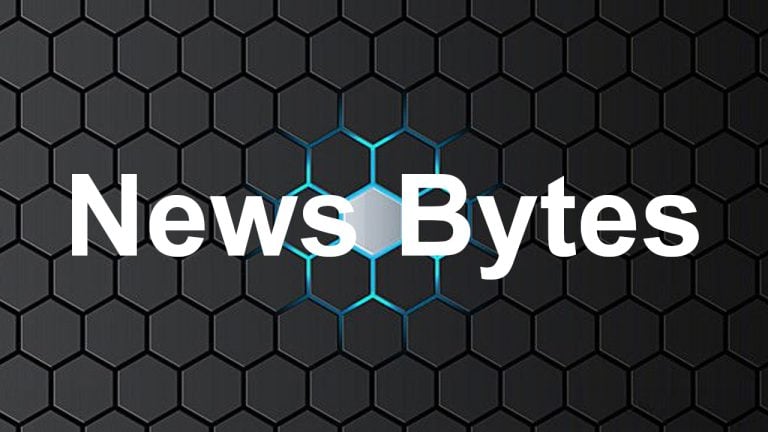Why Binance’s New Debit Card Fails to Fulfill Satoshi’s Vision

Binance’s debit card process makes it a more of a centralized bank-like institution than the decentralized tech dreamed by Bitcoin’s creator.
Satoshi Nakamoto years ago envisioned an ecosystem that would be independent of the centralized financial system that dominates the global economy today. His creation sparked a global community of enthusiasts and an entire industry surrounding blockchain — the solution enabling individuals to turn their money away from centralized legacy institutions and toward transacting on a decentralized, distributed ledger. The ultimate goal was a world in which people could pay for goods and services with these novel financial instruments.
Many payment companies and exchanges already claim to offer services that enable crypto users to buy goods and services with cryptocurrency. Upon further analysis, however — like with Binance’s new debit card offer — it’s clear their crypto payment solutions don’t deliver on the blockchain, adding more intermediaries and opening users to the same harm that could befall them digitally using traditional payment methods.
How the crypto payment process works
Currently, there are two mainstream methods of processing a cryptocurrency-fiat transaction. One method involves the intermediary accepting cryptocurrency and converting it into fiat at a locked-in, instantaneous exchange rate and then delivering fiat to the merchant or vice versa. The second method involves first liquidating the user’s crypto into fiat in the user’s account before it reaches the intermediary and then sending the fiat payment to the intermediary to complete the transaction. The first method takes place on the blockchain, while the second does not.
Numerous payment platforms offer one of the two aforementioned types of transactions. Even the giants are mulling over jumping into the game. PayPal has weighed the idea lately of offering crypto payments to consumers, which could lead the way to increased stabilization of the volatility often associated with Bitcoin (BTC) and other cryptocurrencies. But it remains to be seen exactly how these payment providers plan to process the transactions — whether they would technically allow consumers to pay in crypto or in fiat on or off the blockchain. That’s an important difference to crypto users.
What crypto users want, and what Binance’s card offers
Crypto enthusiasts, as well as regular consumers who like to pay in crypto, value the secure nature of blockchain, which, on top of the clear security benefits, doesn’t include the hidden administrative feeds that credit cards do, such as chargebacks or non-purchase credit card fees.
There are also personal reasons consumers choose to purchase with crypto: the advantage of having full control of their money on a blockchain, an element that is arguably missing from non-blockchain means of storing or transferring financial assets where banks have control. This is the foundation and spirit of cryptocurrency ownership for many crypto users. Some crypto payment solutions available to crypto users, however, have diminished this foundation by the way in which they execute transactions.
Most recently, Binance announced a partnership with Swipe, in essence acquiring the company. Through the acquisition, Binance account holders can now be issued a Binance-branded Visa card. Binance’s Changpeng Zhao, also known as CZ, explained:
“To achieve our mission of making crypto more accessible to the masses, off-ramps are a key component as well. By giving users the ability to convert and spend crypto directly, and have merchants still seamlessly accept fiat, this will make the crypto experience much better for everyone.”
According to the company’s marketing, the card can then be used to purchase goods or services from merchants that accept Visa, giving the impression that the consumer is paying the merchant with cryptocurrency — but there’s a catch. Upon deeper analysis, it’s clear the account holders are not really buying anything with cryptocurrency nor are they making the purchase on the blockchain. This payment method only makes it appear as though the consumer is paying using cryptocurrency. In actuality, the charge is to the customer’s fiat account.
A source close to Binance explained that if the fiat account is empty, Binance’s system converts cryptocurrency from the user’s crypto account into fiat currency. The converted fiat currency is then deposited into the fiat account and used to make the purchase with the Binance debit card. In the transaction, Binance sends the converted fiat currency to the card company to complete the payment process. So, technically, the payment never truly involves paying with crypto or on the blockchain.
Why Binance’s card offer causes crypto contradiction
There are two conceptual problems here. First, the crypto liquidation process into fiat currency through Binance, which is similar to banking mechanisms, is out of the control of the user, negating the foundational spirit of owning cryptocurrency instead of holding cash at a bank — not to mention the unnecessary redundancy it creates by adding Binance, Swipe and Visa as additional intermediaries in the transaction process.
Second, by sending the payment through traditional credit card rails that are not on the blockchain, the user loses the security benefits of paying on the blockchain. Essentially, the whole process places Binance in a sort of bank-like position rather than a facilitator of payment between the user and the merchant, which is what Visa or Mastercard serve in this example.
To satisfy the crypto community’s hunger for a truly decentralized digital currency, users need to know they are paying in crypto, and not be deluded by the promise of it. This means crypto payment platforms need to ensure they are accepting the payment as crypto and not converting the crypto to fiat before sending payment to merchants — an act that undermines the element of transaction transparency to the user.
The most cryptocurrency-user-friendly approach would involve accepting cryptocurrency and instantly locking in a rate that the user will see before paying. Such a mechanism would restore transparency and grant the user full control of the digital currency, while also ensuring that the transaction stays on-chain, thereby reaping its benefits.
These may seem like negligible details, but to a cryptocurrency owner, it can make a world of difference. The entire reason for which users get into crypto revolves around control of the currency and the multitude of benefits of running transactions on a blockchain for both the consumer and merchant. For exchanges and crypto payment providers, the key is to stick to the crypto and blockchain way, rather than creating an illusion. This is true to Satoshi’s vision.
The views, thoughts and opinions expressed here are the author’s alone and do not necessarily reflect or represent the views and opinions of Cointelegraph.
Joshua Tate is the CEO of ForumPay. Josh is a seasoned executive officer with more than 20 years of experience as an entrepreneur, practitioner and legal professional. Prior to founding ForumPay, he founded and launched multiple companies in diversified industries such as fintech, media, real estate and energy. Josh concurrently holds positions as director, CEO and general counsel of several companies and provides a wealth of experience in both fintech and traditional finance. He holds a Bachelor of Science from Kansas State University and a Juris Doctor from the University of Kansas.









